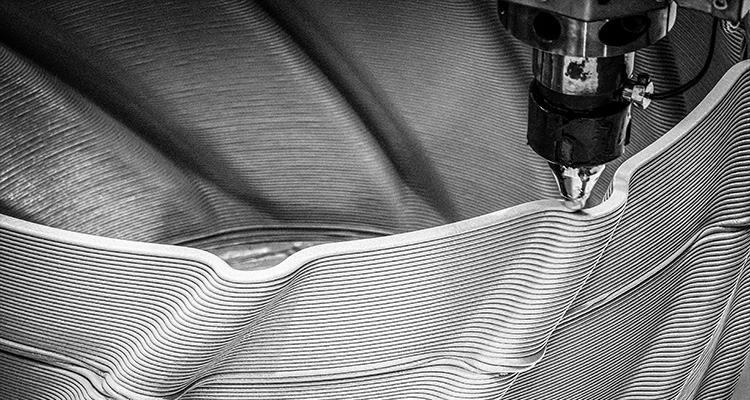Balancing creativity and manufacturing constraints in additive manufacturing. By Chris Robinson
In June 2025, the UK government unveiled its Modern Industrial Strategy, positioning advanced manufacturing, including additive manufacturing (AM), as a cornerstone of future economic growth. With billions of pounds allocated to research, development, and sector specific investment, this strategy reflects a growing recognition of AM’s significance, not only as an enabler of innovation but as a practical engine for job creation, sustainability, and competitiveness.
Across the globe, governments and industries alike are accelerating the adoption of smart manufacturing technologies. Yet, as public funding and industrial ambitions rise, so too does the imperative for manufacturers: AM’s potential can only be realized if bold design innovation is balanced against the demands and regulations of modern manufacturing. 
This moment calls for new approaches to reconcile creative freedom with practical constraints. By leveraging digital design tools, AI-enabled simulation, and integrated feedback loops, firms can navigate this evolving landscape and extract the value from AM.
Where creativity meets constraints
Additive manufacturing has shaken traditional methods, allowing engineers to consolidate parts and create complex geometries for lightweight structures previously considered unfeasible. In sectors such as aerospace, automotive, and healthcare, AM unlocks design potential. However, it does come with a caveat, with each step in creativity bringing fresh manufacturing and operational challenges. Complex designs might look impressive and even perform better than traditional parts, but they can also make it harder to remove extra material, clean the finished part, or avoid issues like warping during printing. Meanwhile, industries adhering to stringent regulatory and safety standards must balance innovation with the necessity of error-free, repeatable builds.
The relationship between creativity and practical production remains deeply interdependent. As competition and policy incentives increase, finding the optimal intersection of performance, reliability, and efficiency is no longer optional. It is a defining factor for firms seeking to succeed in the expanding AM landscape.
Digital tools and AI driven manufacturability checks
Recent advances in digital engineering have begun to close the gap between creative designs and what is realistic from a manufacturing standpoint. Simulation technology now enables engineers to conduct robust virtual manufacturability assessments early in the design cycle. High-fidelity tools evaluate component geometry, predict residual stresses, identify problematic support regions, and highlight areas at risk for powder entrapment, all before physical printing begins.
Artificial intelligence and machine learning are also elevating this process, drawing on both historical build data and real-time analytics to recommend design adjustments and optimize parameters. Algorithms provide manufacturability feedback in seconds, flagging issues that may otherwise lead to costly rework or build failures.
For manufacturers, the integration of digital twins further transforms this landscape. Virtual prototypes respond dynamically to print simulation, enabling teams to iterate designs rapidly, all while reducing material waste and production delays. The result is faster time-to-market, reduced development risk, and greater confidence in the final product’s performance.
 Closing the loop from design to production
Closing the loop from design to production
To truly deliver on AM’s promise, manufacturers are increasingly adopting closed-loop digital workflows that connect design intent directly to production execution. Integrated CAD/CAM systems and digital threads preserve critical context as an idea moves from the drawing board to the printer. In-situ monitoring, including sensors and optical systems within AM equipment, captures build data in real time, detecting anomalies, defects, and deformation as they occur.
Crucially, this data no longer sits in silos. Feedback is fed back to engineering teams, informing real time process adjustment and iterative design improvements. Automated compensation for distortion, enhanced support generation, and streamlined powder extraction processes become achievable realities with these connected workflows. The potential rewards are significant: manufacturers could see shorter lead times, improved repeatability, and greater ability to meet both regulatory and commercial requirements, which is increasingly becoming a vital advantage as government funding and expectations rise.
Empowering innovation and sustainability
As AM matures, material advancements and smart automation are opening new possibilities for sustainable, decentralized production. Lighter, optimized components reduce not only material usage but in service energy consumption, directly supporting environmental and net zero ambitions. Public investment and collaborative R&D are accelerating the shift towards integrated, data-driven AM ecosystems, breaking down silos and encouraging knowledge sharing across industries.
As digital tools continue to integrate AI, feedback loops, and cross-disciplinary expertise, engineering teams can push the boundaries of what’s possible, while retaining control over process efficiency and product quality. The UK’s Modern Industrial Strategy is only the latest development in this sector, and it points to a future where manufacturing leaders will be those who adeptly balance design freedom with practical manufacturability.
Chris Robinson
Chris Robinson is lead product manager for AM and Metal Forming at Ansys, now part of Synopsys. Synopsys is the leader in engineering solutions from silicon to systems, enabling customers to rapidly innovate AI-powered products. It delivers industry-leading silicon design, IP, simulation and analysis solutions, and design services. It partners closely with customers across a wide range of industries to maximize their R&D capability and productivity, powering innovation today that ignites the ingenuity of tomorrow.

 Closing the loop from design to production
Closing the loop from design to production